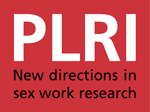IPPF
Since we first heard of HIV over 25 years ago, we have learned much about prevention. Knowledge about HIV transmission and the role of key interventions to prevent HIV transmission from mother-to-child and harm reduction initiatives for people who use drugs have dramatically altered the prevention landscape. However, a worrying trend has emerged from the shadows. The use of criminal statutes and criminal prosecutions against HIV transmission is an important human rights issue facing the world today.

